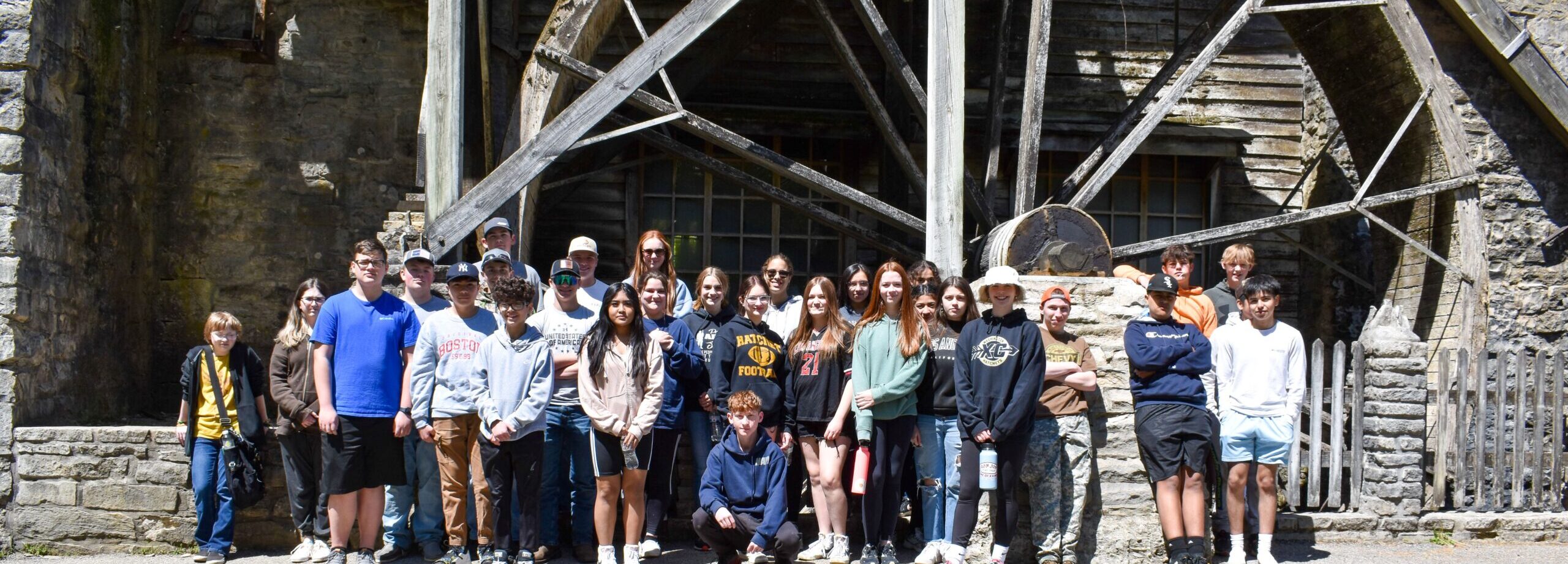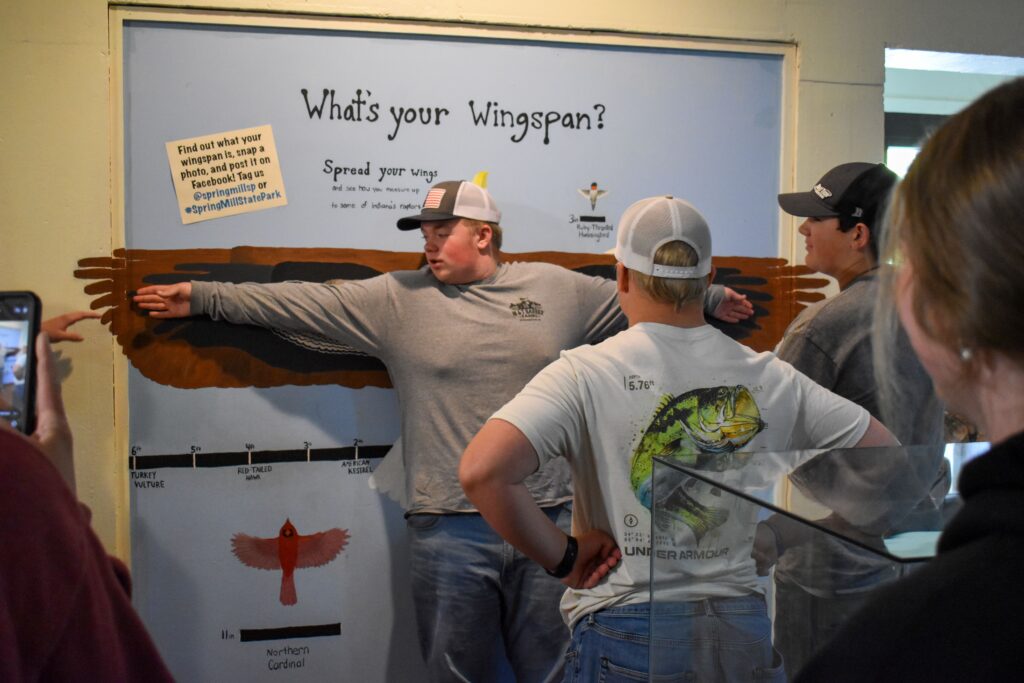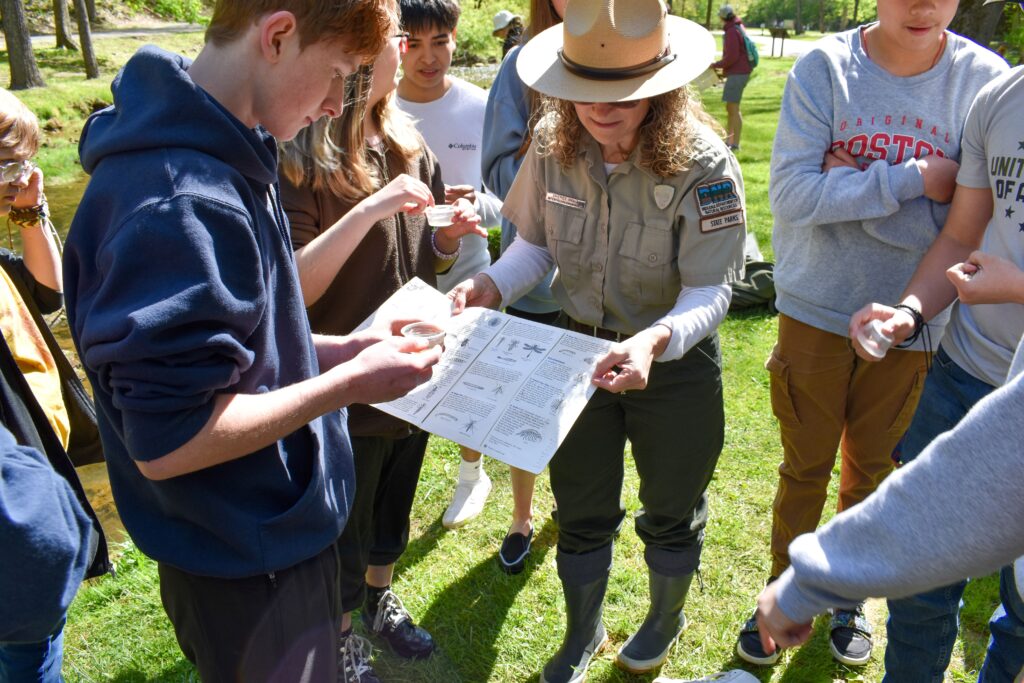Students Discover the Outdoors at Spring Mill State Park

In May, students from Washington High School spent a day immersed in the natural world at Spring Mill State Park, thanks to funding from the Discover the Outdoors field trip grant program.
Offered in partnership with Indiana State Parks, Discover the Outdoors encourages educators to take students on field trips to an Indiana state park or reservoir. Dedicated staff at each property take time to guide the students through the natural and cultural history of the area they are exploring.
The group of freshman students began their day learning about historically significant figures and events at the Gus Grissom Memorial. The memorial tells the life story of the Mitchell native and showcases many artifacts from his time as a NASA astronaut. As students prepared to head for the next park feature, each was asked to share an interesting fact they learned at the memorial.
The trip continued at the nature center where students explored exhibits highlighting the area’s unique natural features. Within the center, students learned about native snakes, turtles, and other wildlife. While the snakes in the nature center may be in enclosed habitats, the students were treated to a surprise when they discovered a common water snake near the trail as they made their way to the next experience.

Students enjoy interactive features within the nature center.
The students then joined Sheree Belt, Spring Mill’s interpretive naturalist, at Mill Creek for a unique hands-on learning opportunity. They took off their shoes and waded out into the creek to look for invertebrates. By gently turning over stones and searching along the bank, students found a variety of organisms. They then examined the species using materials provided by Belt before returning them to the water.
Despite the cold water, many students were deeply engaged and continued to ask Belt questions about the macroinvertebrates they discovered. With her guidance, they analyzed the water quality and learned about the importance of a diverse ecosystem.

Belt helps students identify invertebrates.
“Every little piece, from these macroinvertebrates to us as humans, plays a vital role in creating and maintaining healthy ecosystems,” Belt told a group as they examined a crayfish.
As their time at the park wound down, the energy levels remained high. As the last experience of the day, the group set out for a hike that started with a walk through Pioneer Village.
Pioneer Village offers visitors a chance to step back in time. The historic area contains 20 buildings that visitors can explore, including a working grist mill originally constructed in 1817.
The hike culminated at Donaldson Cave. While students explored its dry side, they learned about the park’s cave ecosystems and the unique species that reside within, including the Hoosier cavefish, an endangered species.
“This trip was the first Discover the Outdoors trip in our district, and it was very well received by the students,” said Valerie Clarke, a teacher at Washington High. “They enjoyed getting to explore Donaldson Cave, and even though the creek was a little chilly, they enjoyed looking for macroinvertebrates in order to determine water quality.”
For many students, this was also their first trip to an Indiana state park and the first time spending considerable time in nature. The excitement and enthusiasm they shared goes to show the power of outdoor education. The time they spent at Spring Mill provided new educational experiences, but it may have also sparked a lifelong passion for conservation.
If you want to help inspire the next generation of conservationists, please consider donating to the INRF. If you are an educator interested in applying for a field trip grant, you can learn more here.
